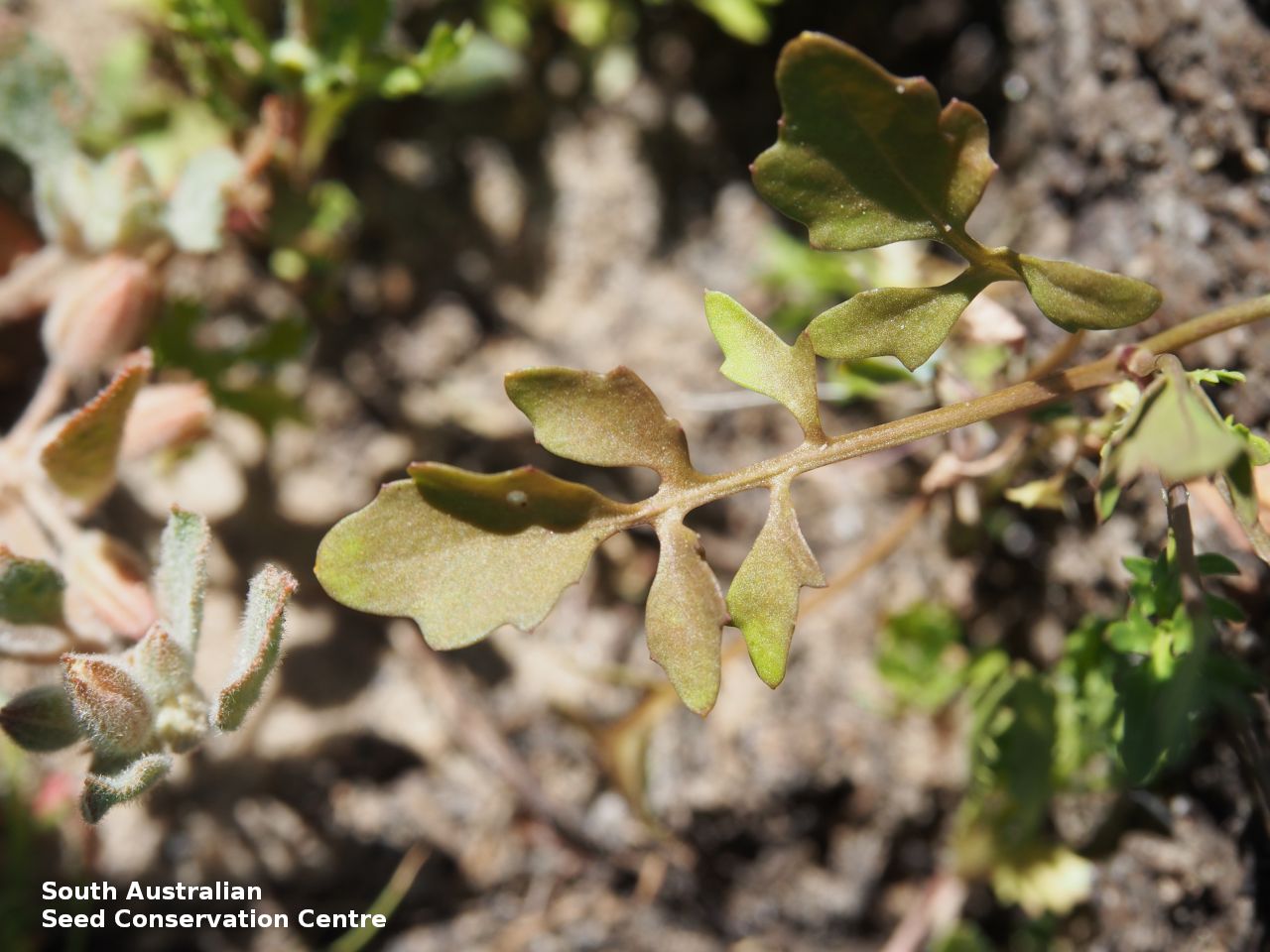


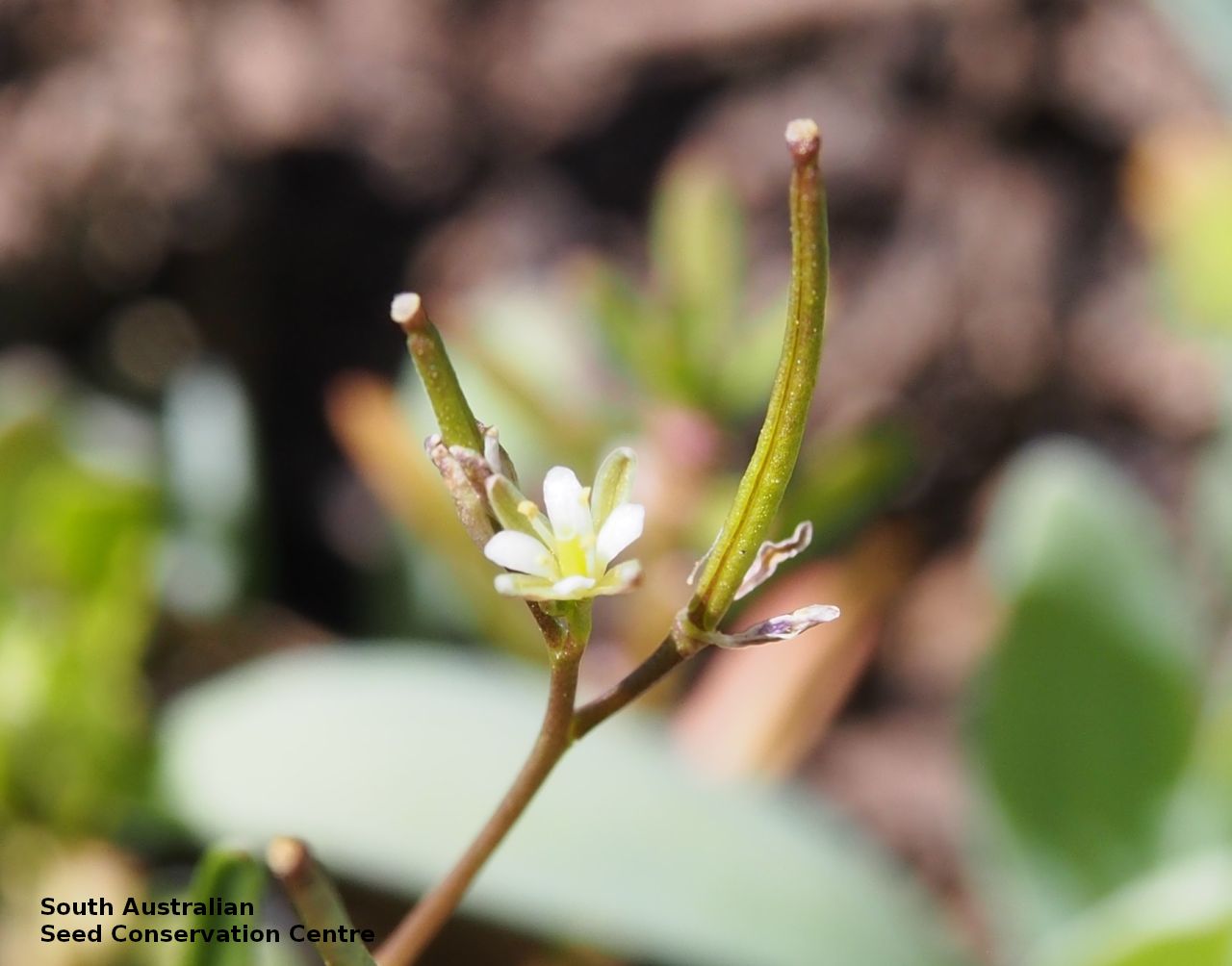
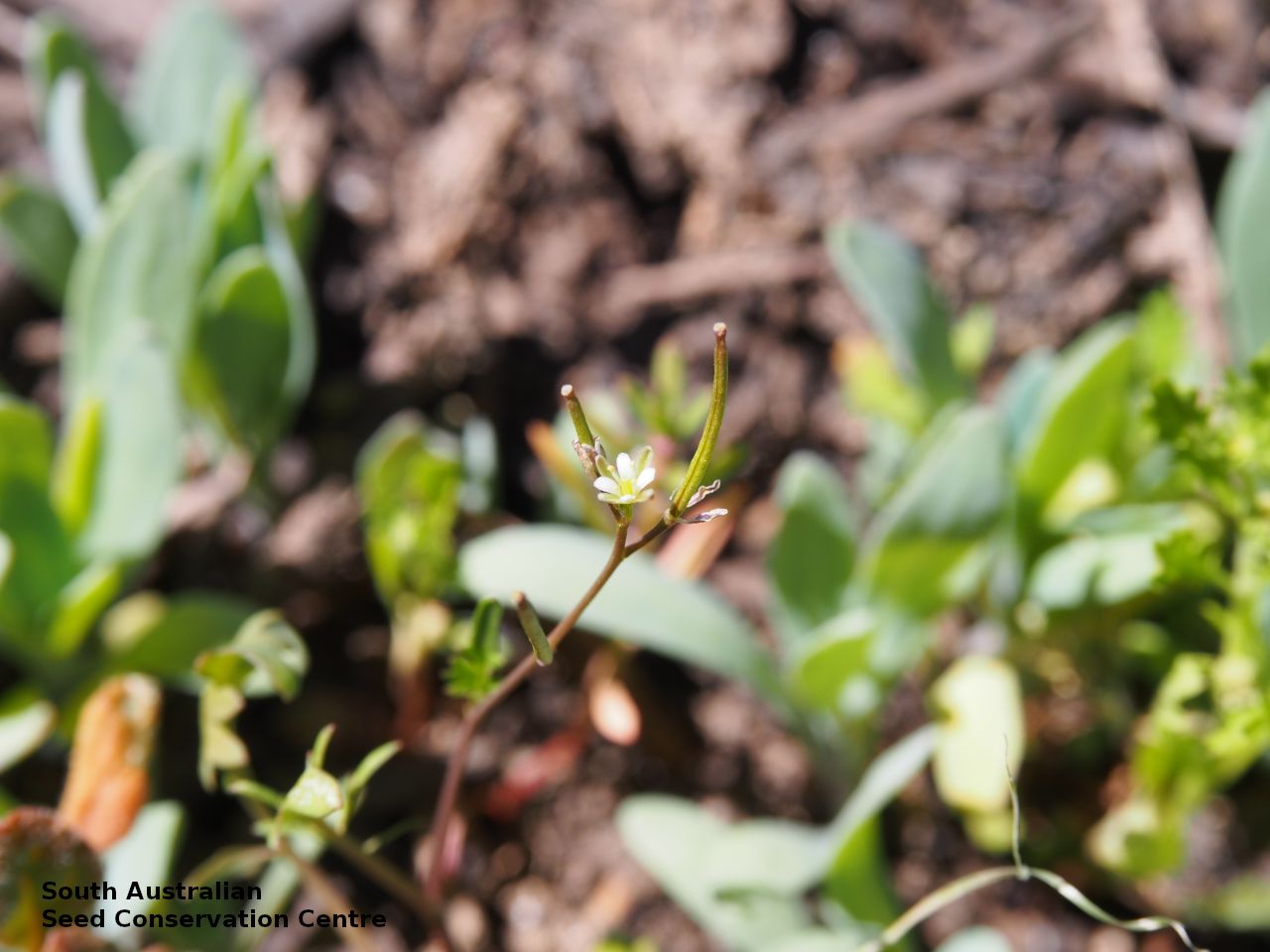

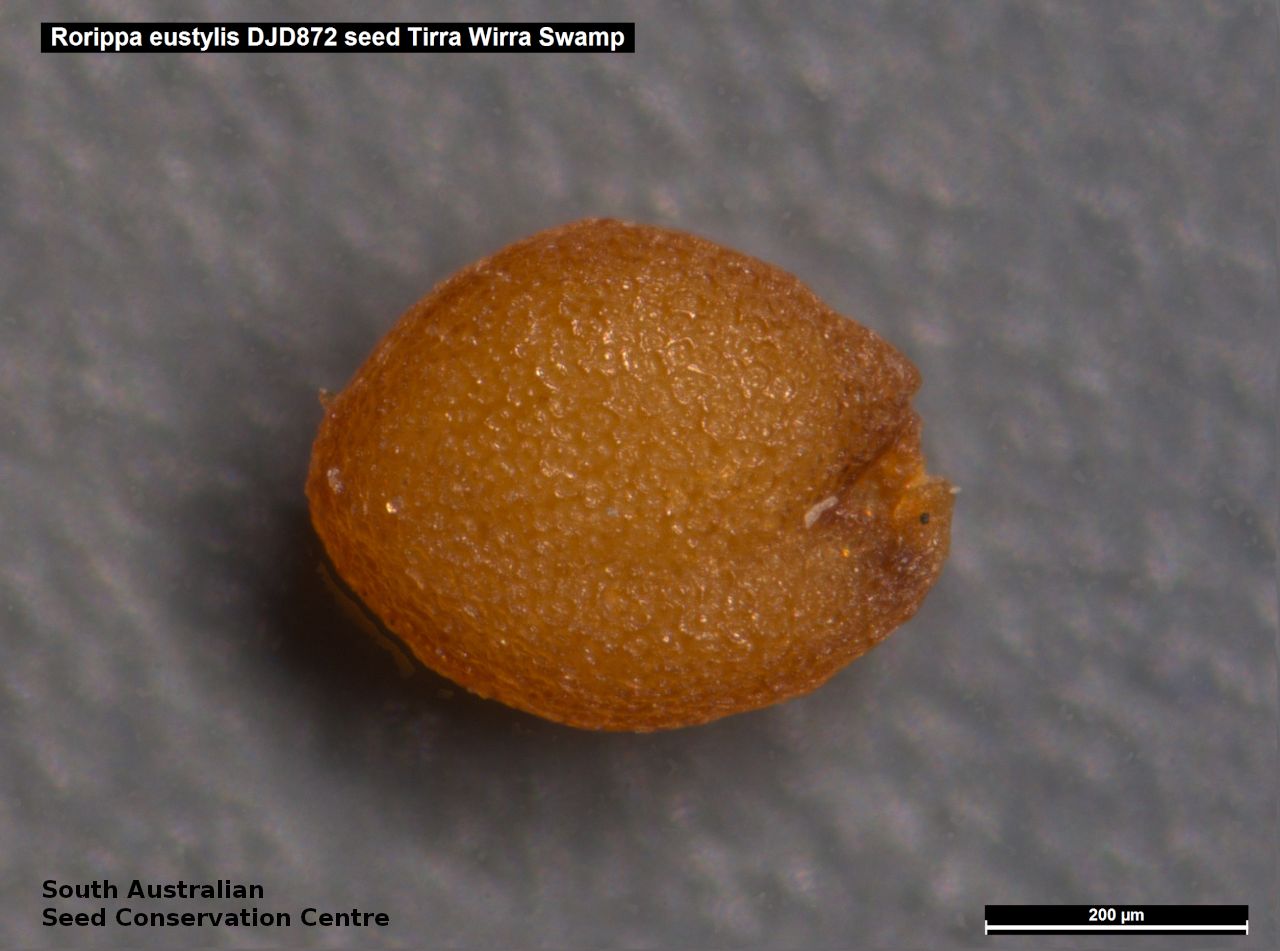
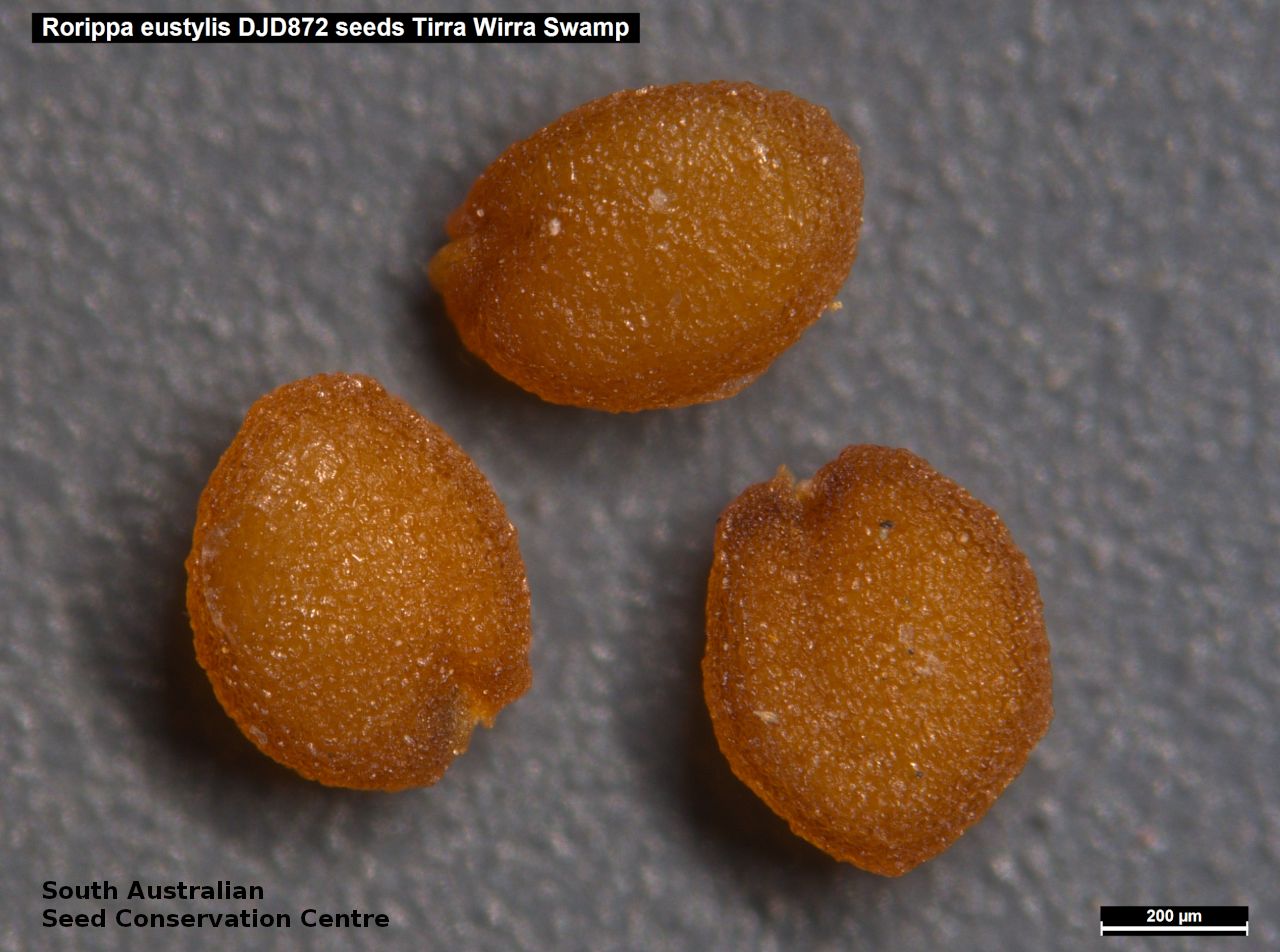

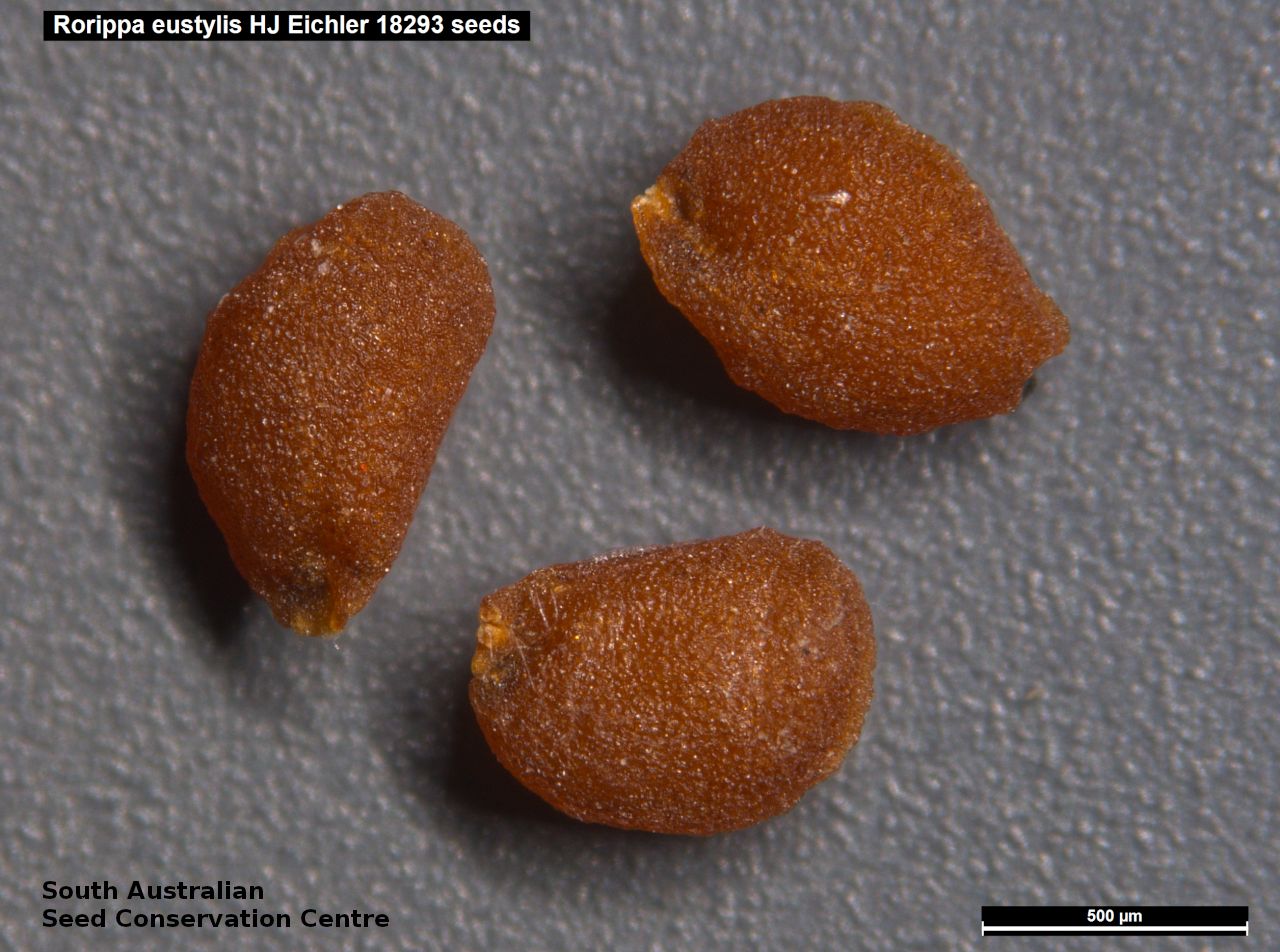

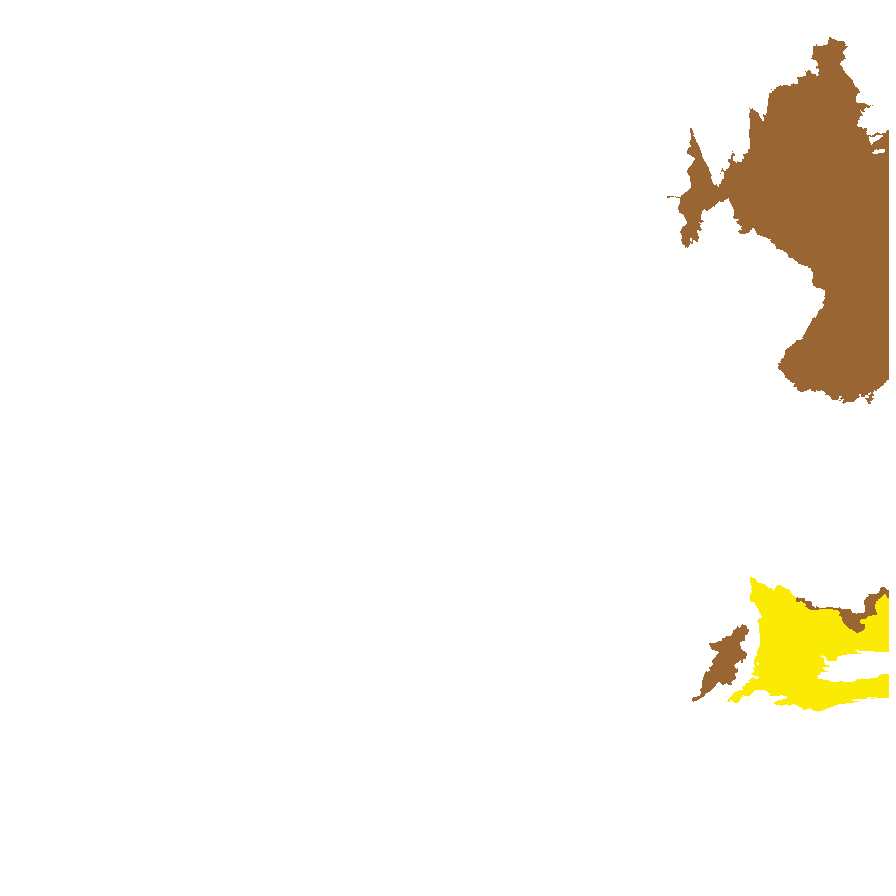
Botanical art
Prior names
Nasturtium eustyle
Cardamine eustylis
Common names
River Cress
River Bitter-cress
Etymology
Rorippa possible from the Latinised form of 'Rorippen', a Saxon vernacular name used by Euricius Cordus or from the Latin 'roro' meaning to be moist and 'ripa' meaning riverbank; referring to the genus habitat in moist places. Eustylis from the Greek 'eu' meaning good and 'stylos' meaning style.
Distribution and status
Found in the north-eastern corner and along the Murray River in South Australia, growing in swamps and flood-plains. Also found in all mainland states. Native. Uncommon in South Australia. Rare in Western Australia and Victoria. Uncommon in the Northern Territory. Common in the other states.
Herbarium regions: Lake Eyre, Murray
AVH map: SA distribution map (external link)
Plant description
Annual or ephemeral herb to 30 cm high, decumbent to ascending, much-branched from base, glabrous or hairy. Leaves petiolate, 1–2-pinnately divided, to 9 cm long, lobes coarsely toothed. Inflorescence a loose spike with white flowers. Flowers throughout the year. Fruits are long brown pod to 25 mm long and 1 mm wide, style to 1.5 mm long. Seeds are small orange ovoid seeds to 0.6 mm long and 0.4 mm wide. Seed embryo type is bent.
Seed collection and propagation
Collect seeds between January and December. Collect maturing pods those turning pale brown with orange seeds inside. Be gentle with the pods as they split open easily. Place the pods in a tray and cover with paper to prevent seeds from popping out and leave to dry for a week. Then rub the dried pods gently by hand to dislodge the seeds. Use a sieve to separate the unwanted material. Store the seeds with a desiccant such as dried silica beads or dry rice, in an air tight container in a cool and dry place. From one collection, the seed viability was high, at 100%.
| Location | No. of seeds (weight grams) | Number of plants | Date collected | Collection number Collection location | Date stored | % Viability | Storage temperature |
|---|---|---|---|---|---|---|---|
| MSB | 12,000 (1.39 g) | 1-Dec-2006 | RJB70698 Murray | ||||
| BGA MSB | 9,300 (0.43 g) 9,300 (0.43 g) | 100+ | 27-Sep-2007 | DJD872 Lake Eyre | 19-Sep-2008 | 100% | -18°C |
| BGA | 17,565 (1.493 g) | 30+ | 19-Apr-2023 | BKB278 Murray | 20-Jun-2023 | 100% | -18°C, -80°C |
Number of plants: This is the number of plants from which the seeds were collected.
Collection location: The Herbarium of South Australia's region name.
% Viability: Percentage of filled healthy seeds determined by a cut test or x-ray.